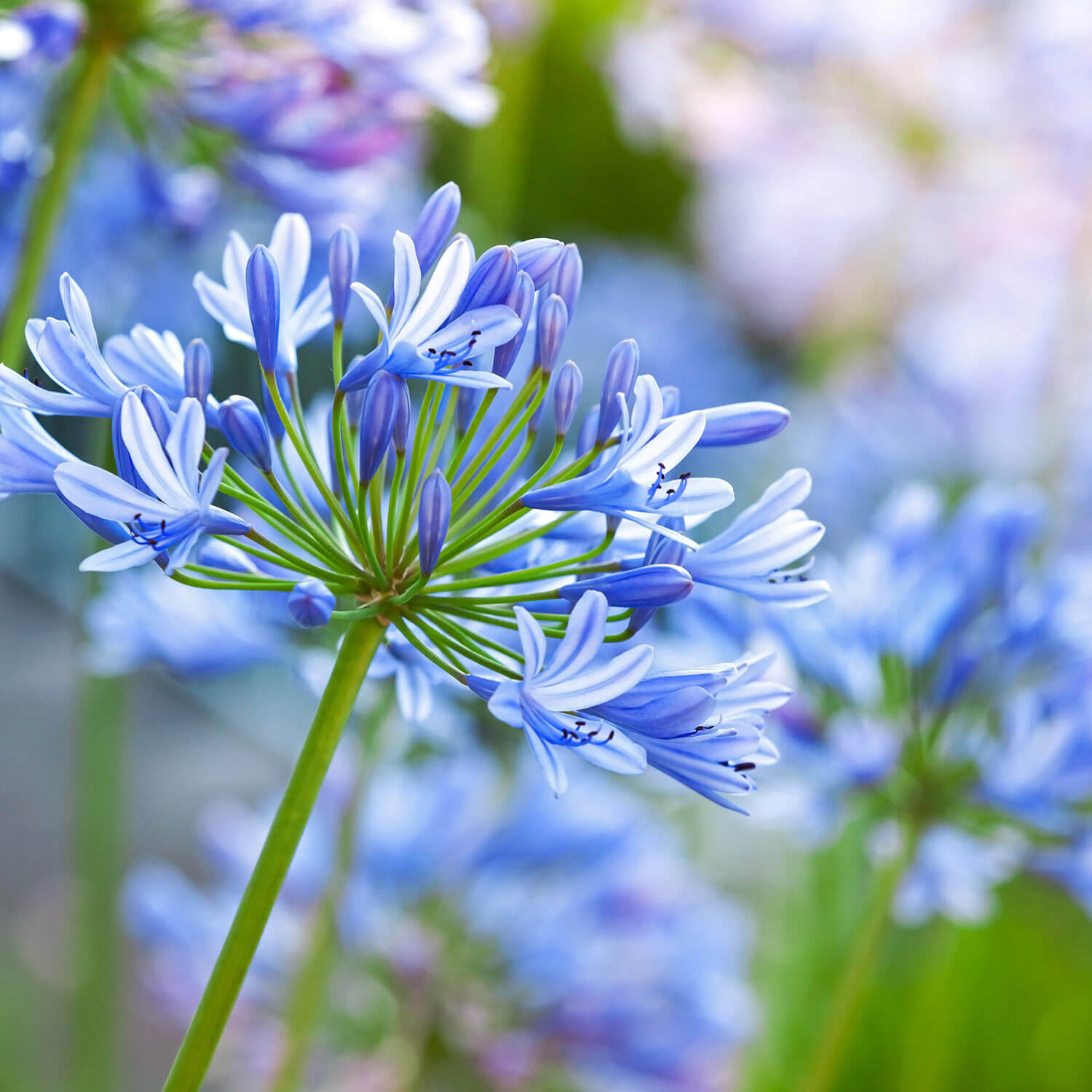Just how to Plant and Maintain Agapanthus in Your Yard
Just how to Plant and Maintain Agapanthus in Your Yard
Blog Article
Unleashing the Secret to Successful Agapanthus Farming: Idea for a Flourishing Yard
In the world of horticulture, growing agapanthus effectively needs a strategic approach that encompasses different facets of plant treatment. By comprehending the nuances of agapanthus cultivation, one can produce an environment where these plants prosper and grow perfectly.
Growing Agapanthus: Finest Practices
When growing Agapanthus, correct dirt prep work is crucial for ensuring effective growth and development of these lovely blossoms. Agapanthus, typically recognized as Lily of the Nile or African lily, flourishes in well-draining soil with a somewhat acidic to neutral pH level - Agapanthus. Prior to growing, it is vital to modify heavy clay dirts with raw material such as garden compost or peat moss to enhance drain and provide vital nutrients for the plants
To grow Agapanthus, choose a location that obtains complete sunshine to partial color, as this will promote healthy and balanced growth and abundant flowering. Dig a hole twice the diameter of the plant's origin ball and put the Agapanthus at the same deepness it was formerly expanding. Gently backfill the opening with soil, pushing down firmly to get rid of any type of air pockets around the roots.
Water the recently grown Agapanthus extensively and remain to maintain the dirt uniformly damp, specifically throughout the plant's active expanding season. Agapanthus. Using a balanced plant food once a month can better sustain the plant's development and blooming. By following these ideal methods for planting Agapanthus, you can develop a sensational display of these captivating flowers in your garden
Suitable Soil Conditions for Agapanthus
For optimum development and blooming success of Agapanthus plants, guaranteeing the soil problems are perfect is essential. Agapanthus prefers dirt that is rich in nutrients, so integrating a balanced fertilizer during the expanding period can promote healthy and balanced development and dynamic blooms.

Watering and Feeding Tips
To ensure healthy and balanced development and lively flowers, appropriate watering and fertilizing techniques are vital for effective Agapanthus farming. Agapanthus plants benefit from normal watering, particularly throughout the growing period.
When it concerns feeding Agapanthus, a well balanced fertilizer with equal parts nitrogen, phosphorus, and potassium can be used in the spring to advertise healthy growth and flowering. Slow-release fertilizers are optimal for supplying nutrients gradually over an extended duration. Stay clear of over-fertilizing, as this can cause too much foliage growth at the cost of flowers.
Additionally, incorporating organic issue like garden compost right into the soil can boost nutrient levels and enhance dirt structure, helping in the general health of the Agapanthus plants. By following these watering and feeding tips, gardeners can ensure their Agapanthus plants prosper and produce sensational displays of blossoms.
Pruning and Deadheading Methods
Correct helpful hints trimming and deadheading methods play a vital role in keeping the health and wellness and looks of Agapanthus plants, complementing the crucial methods of watering and feeding for effective farming. Trimming Agapanthus involves eliminating invested blossom heads, yellowing or dead leaves, and general shaping of the plant to advertise better development. Deadheading, the process of getting rid of faded blossoms, not just boosts the plant's look however also motivates more flowering.
When my site deadheading Agapanthus, it is suggested to clip off the blossom stem at the base utilizing sharp, tidy shears. This process redirects the plant's energy from seed manufacturing back right into root and vegetation growth, advertising a much healthier and more durable plant. Routine deadheading can expand the growing duration of Agapanthus and avoid self-seeding, which can bring about overcrowding.
In regards to trimming, Agapanthus typically gain from a light trim after blossoming to clean the plant and encourage fresh development. Cutting back the invested blossom stems and removing any dead or damaged foliage aids maintain the plant's vitality and overall look. However, it is important to stay clear of cutting into the crown of the plant, as this can damage its wellness.

Protecting Agapanthus From Pests and Diseases
Executing effective pest and illness administration techniques is essential to protecting the try this web-site wellness and vitality of Agapanthus plants in farming. Agapanthus are normally sturdy plants, yet they can still come down with numerous insects and diseases otherwise correctly looked after. One typical parasite that influences Agapanthus is the Agapanthus borer, a caterpillar that passages into the plant, triggering damage to the flowers and fallen leaves. To protect against invasions, regular examination of the plants is vital. If borers are spotted, they can be by hand removed, or insecticidal soap can be made use of as a control procedure.
In addition to insects, Agapanthus are vulnerable to illness such as root rot and fungal fallen leave spots. By staying vigilant and dealing with bug and illness problems immediately, garden enthusiasts can help their Agapanthus prosper and grow.

Conclusion
Finally, effective farming of agapanthus needs proper planting strategies, optimal dirt conditions, ample watering and fertilizing, normal pruning and deadheading, and defense from insects and conditions. By complying with these pointers and tricks, gardeners can make sure a flourishing garden filled up with attractive agapanthus blooms. Agapanthus. Keep in mind to preserve regular treatment and attention to detail to advertise the health and wellness and longevity of these magnificent plants
When planting Agapanthus, proper soil prep work is vital for making certain effective development and growth of these gorgeous blossoms.Water the freshly grown Agapanthus extensively and continue to keep the soil equally damp, especially during the plant's energetic expanding period.For optimal growth and growing success of Agapanthus plants, ensuring the soil conditions are perfect is vital. When hair transplanting or growing Agapanthus, make certain the soil is well-prepared to provide the necessary foundation for the plants to establish themselves successfully. One common pest that affects Agapanthus is the Agapanthus borer, a caterpillar that passages right into the plant, creating damages to the flowers and fallen leaves.
Report this page